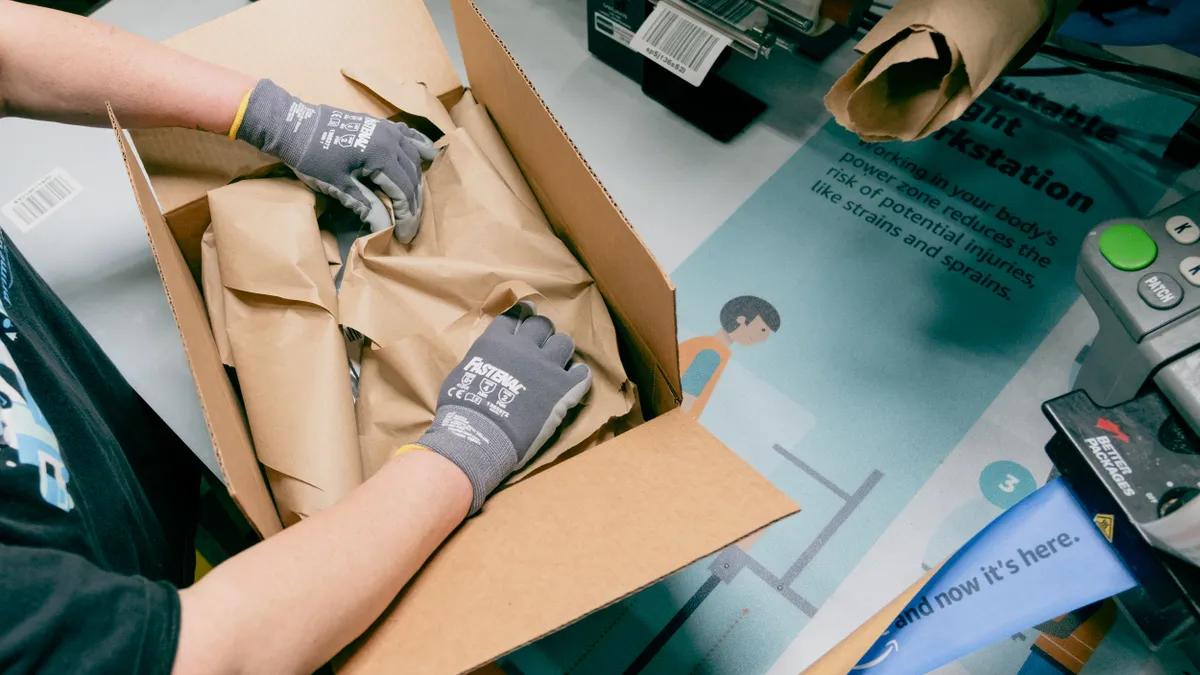Supply Chain by Amazon was initially launched in September as part of its end-to-end portfolio of supply chain services the e-commerce company has been investing in. The addition of “fully managed” capabilities allows the company to further simplify its offerings to sellers.
Although several of the seller services have been in place since its genesis, Amazon has continued to modify its supply chain solution with new logistics features, additional warehousing support solutions, better forecasting algorithms and more, the spokesperson said.
Mehta noted that a couple hundred thousand sellers are using at least one of Amazon’s supply chain services. Meanwhile, the number of sellers using multiple solutions has tripled since the start of the year.
Sellers using the end-to-end solution qualify to be charged 25% less for storage fees and 15% less in transportation and processing costs associated with Amazon Warehouse and Distribution services.
Amazon will roll out the new features to users over time. The solution will be made available to U.S. sellers for domestic pickup in October, with a full global rollout slated by the end of the year, per the release.
The new, automated option leverages machine learning and predictive analytics to help automate the process of identifying or predicting where to move an individual unit or when, according to Mehta. While humans are still involved in operations like shipping, automation is used to ensure operations are more safe and reliable.
“There really is a blending of those areas where you can say, ‘hey, automation is really good at certain things, maybe faster, safer, more reliable, and other places where humans are better because it just requires humans, or requires human judgment or creativity.’ So we got a balance of both,” Mehta said.
But at the end of the day, the seller remains in control of what services they want to automate, Mehta said.
He further noted that, typically, sellers with larger or more complex supply chains opt for more control, while several small- and medium-sized businesses opt for an automated solution to simplify their operations.
“We try and balance both providing a lot of choice and a lot of control and a lot of configurability for the people that want it, but then also being able to make things simple and fully manage them and automate them for the folks that want that,” said Mehta.







